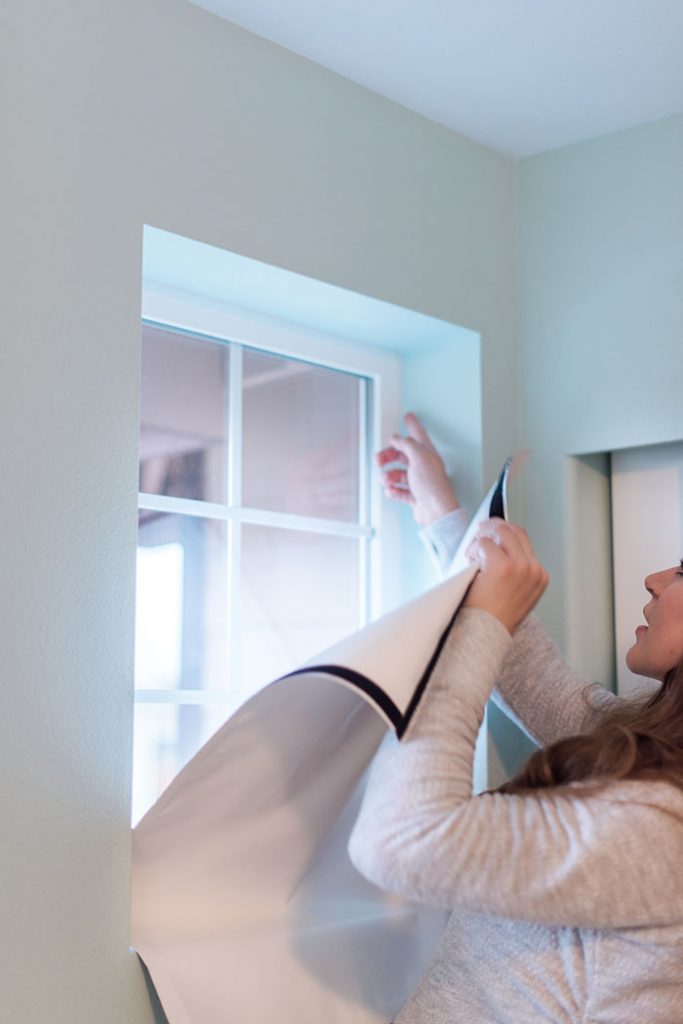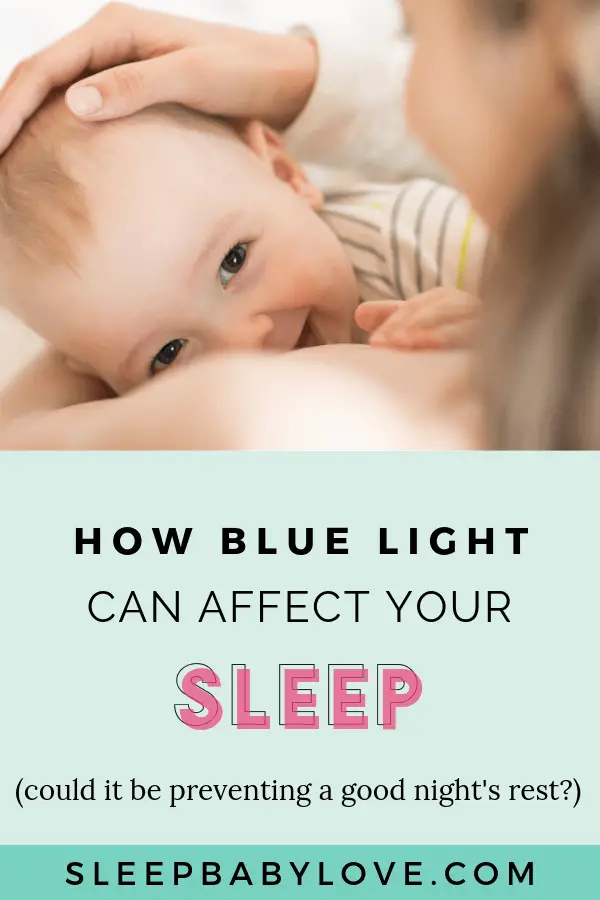The Sneaky Blue Light Effects On You and Your Baby’s Sleep
Trouble Sleeping at Night? Blue Light may be the Culprit
When you first notice that your baby is not sleeping well anymore, your first instinct might be to assume that they are dealing with colic, sleep regression, or any other infant sleep issues that most families face. However, the culprit might be something a little more unusual. It turns out that the problem for some babies might just be light itself.
Sleep experts are beginning to realize that the light we encounter before and during our sleep can actually greatly impair our quality of sleep. Light with blue wavelengths can be particularly damaging to sleep quality. If you want to make sure you and your baby get the best sleep possible, there are a few things you need to know about blue light.
(Susie here: this is a guest post by my friend Ashley. I’ve heard about blue light affecting sleep – but this post gives some details behind it.)
What is Blue Light and Why is it a Problem?
Blue light is a type of light that is present in certain wavelengths. It may not necessarily look blue; instead, some blue light has a more whitish or grayish color. In nature, blue light is mostly found in the rays of the sun when it is at its highest peak.
The relationship between blue light and the sun is the reason it affects sleep. All humans have a circadian rhythm which is an incredibly complex system of biological processes that is regulated by the 24-hour cycle of the sun. Blue light simulates the sun, so it causes surges in energizing hormones and gut activity. The end result is that you feel more alert and awake when you have been exposed to blue light.
No matter how cozy everything is around you or your baby, just the simple presence of blue light can be enough to keep you from drifting off to sleep. Even when you have a bed carefully designed to be as cool and comfortable as possible, blue light can be keeping your family up. One sleep lab study found that people who were exposed to blue light before bed took far longer to fall asleep and felt much sleepier the next day.
Blue light is not just bad right when you are trying to fall asleep. It can take a few hours to get over the wakeful effects of blue light exposure. Because of this issue, Harvard Health recommends avoiding blue light for two to three hours before bed to avoid this issue.
Even after you or your baby are asleep, blue light may still be a problem. An extensive study from the National Toxicology Program found that exposure to artificial light results in inconsistent waking and sleeping patterns. Essentially, the brain thinks it is noon if there is a blue light in the room, so it keeps trying to pull you out of deep sleep. This can lead to your baby waking up repeatedly throughout the night and being fussy the next day.
Ways Your Baby Might be Exposed to Blue Light
Though the sun might be the most common natural source of blue light, it is not the only way that humans encounter blue light. Thanks to modern technology, there are now countless ways that we introduce blue light into our home. Almost any artificial source of light tends to fall into the category of blue light.
Television screens, computers, tablets, laptops, and smartphones all send out very strong blue light. According to 2016 research, the blue light emitted by LEDs used in most screens today is strong enough to cause wakefulness even though it appears white.
Keep in mind that you and your family might be exposed to blue light even when you minimize screen time before bed. Tiny sources of blue light, such as an alarm clock with white or blue fluorescent numbers or a blinking blue sensor on a sleeping computer monitor can be enough to cause problems.
Some forms of fluorescent and LED lighting can also have wavelengths that fall into the blue light spectrum. Many parents are having issues because their city has changed street lights from the older yellow style to newer energy efficient styles with blue light. This can mean that even when you eliminate all other forms of blue light, your child is getting exposed to it through gaps in their blinds or curtains.
How to Reduce Blue Light Exposure in Your Home
Worried about how blue light might be affecting your family’s health? There are several ways you can minimize blue light exposure.
Switch Out Light Bulbs
First of all, you need to take a look at your light bulbs’ and consider using different ones. Warm light bulbs that have a soft yellowish or orangish hue instead of using white or bluish bulbs will help to stimulate sleep. It is still fine to have bluer bulbs for daytime activities, but a few hours before you want your baby to sleep, turn those off and only use warmer lighting sources.
Limit Screen Time Before Bed
It is also a good idea to rethink screen time before bed. Avoid watching television or browsing on a smartphone while you put your baby to sleep. One of the most important things you need to do is stop falling asleep by watching television or reading on a brightly lit e-reader. Instead, consider reading a book or listening to music to relax. If you absolutely must use a screen before bed, install a program that limits the blue light emitted by the screen.
Turn Off Artificial Lighting Sources
When you or your baby is asleep, it is a good idea to have the room as dark as possible. This means that you should try to do things like close the door instead of letting the hall light shine into the bedroom. Avoid using night lights and electric alarm clocks, and turn off any electronics that stay lit up all night. If you are worried about tripping when you get out of bed for night time feedings, install night lights with a motion sensor. Any artificial lights that you need in your room should have a reddish hue instead of a blue or white color.
Invest in Light Blocking Window Treatments
No matter how hard you try to avoid artificial light when you and your child are sleeping, it often seems like it can still leak in from outdoor sources like headlights and street lights. The best solution for this is to look into blackout curtains or light blocking window liners. This can help to ensure everyone gets the best sleep possible.

Author Bio: Ashley Powell is Ghostbed’s content and Customer Education manager. She is a Biohacking enthusiast and loves optimizing her Productivity, Sleep and Health.

